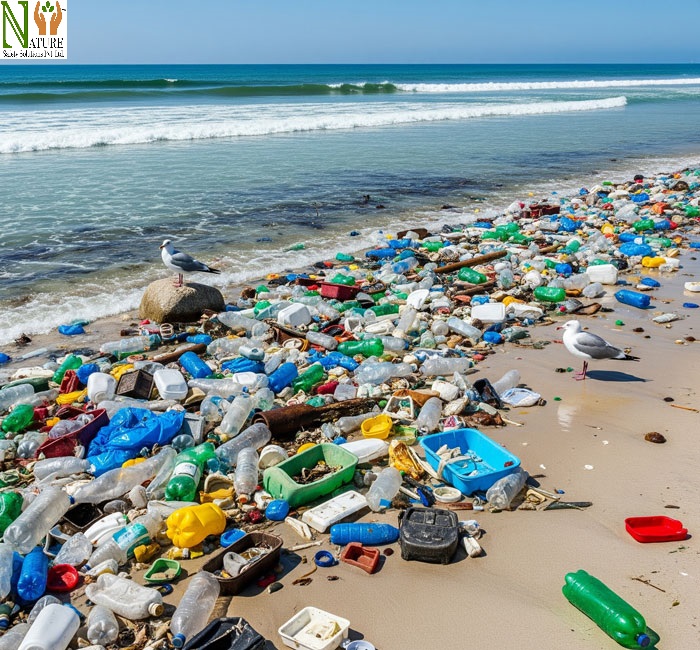Plastic has become one of the most widely used materials in the modern world. From packaging and electronics to clothing and household items, plastic is everywhere.
However, the same qualities that make plastic so useful—its durability, light weight, and resistance to degradation—also make it a major environmental threat.
The world’s dependence on plastic has created a crisis that is spiraling out of control, with long-term consequences for our ecosystems, health, and future generations.

A Growing Mountain of Waste
Globally, we produce over 400 million tonnes of plastic every year. Much of this is single-use—items like bags, bottles, straws, and wrappers that are discarded after a few minutes of use. Sadly, less than 10% of plastic waste is recycled, while the rest ends up in landfills, rivers, and oceans.
Plastics can take hundreds to thousands of years to break down. Even then, they don’t disappear completely—they break into microplastics, tiny particles that pollute soil, water, and even the air we breathe.
Ocean Pollution and Marine Life
One of the most devastating impacts of plastic pollution is on our oceans. Every year, an estimated 11 million tonnes of plastic enter the oceans, harming marine ecosystems.
Animals like sea turtles, whales, dolphins, and seabirds often mistake plastic for food. Consuming plastic can lead to starvation, internal injuries, or even death.
Fishing nets and other plastic debris also cause entanglement, which can drown or injure marine life. Coral reefs, vital for ocean biodiversity, are also being suffocated by plastic waste.
Microplastics: A Hidden Threat
When plastics degrade, they break into microplastics—fragments smaller than 5 millimeters. These are now found in oceans, rivers, soil, food, and even inside the human body. Studies have detected microplastics in bottled water, salt, seafood, and even human blood and lungs.
The long-term health effects of microplastic exposure are still being studied, but early research links them to inflammation, hormone disruption, and increased risk of certain diseases.
Impact on Wildlife and Ecosystems
Beyond the ocean, plastic pollution is damaging land ecosystems too. Animals in forests and grasslands often ingest plastic accidentally or get trapped in it.
In landfills and open dump sites, plastic waste contributes to toxic runoff that seeps into the soil and water, disrupting plant growth and contaminating groundwater.
Wildlife that consume plastic waste may suffer from malnutrition or poisoning. Plastic debris can also block natural waterways, leading to increased flooding and destruction of habitats.
Climate Change Connection
Plastic production is closely tied to fossil fuels. Most plastics are made from petroleum and natural gas, and the extraction, refinement, and manufacturing processes release large amounts of greenhouse gases.
By 2050, plastic production and incineration could release over 2.75 billion tonnes of CO₂ per year. That’s more than what 600 coal-fired power plants emit annually.
Challenges in Recycling
While recycling seems like a solution, it is far from perfect. Many plastics are difficult or impossible to recycle due to their chemical composition or contamination with food and other materials. Even when recyclable, plastic can usually only be recycled once or twice before the quality degrades.
Furthermore, a lot of the plastic we think is being recycled is actually shipped to developing countries, where it is burned or dumped, harming communities and the environment.
What Can Be Done?
Solving the plastic problem will require coordinated action at every level—government, industry, and individual. Here are some essential steps:
- Reduce single-use plastics: Governments can ban or limit items like plastic bags, straws, and cutlery.
- Promote alternatives: Encourage the use of biodegradable materials, paper, glass, and reusable products.
- Improve waste management systems: Invest in better collection, sorting, and recycling technologies.
- Extended producer responsibility (EPR): Hold manufacturers accountable for the life cycle of their plastic products.
Public awareness: Educate communities on how to reduce plastic use and properly dispose of waste.
What You Can Do
- As individuals, we can also make a difference:
- Bring your own bags, bottles, and containers.
- Avoid products with excessive packaging.
- Choose products made from recycled or natural materials.
- Participate in clean-up drives and support environmental organizations.
- Raise awareness in your community and advocate for plastic bans and better policies.
Also read:-
- Small Habits, Big Impact: Everyday Actions That Help the Planet
- Green Barriers: Nature’s Shield Against Pollution
- Green Office Practices: Small Steps Toward a Sustainable Future
- Zero Waste Workplaces: How Companies Are Leading the Way
- Why Environment, Health & Safety Matters More Than Ever
- The Hidden Impact of Food Waste on Our Environment
